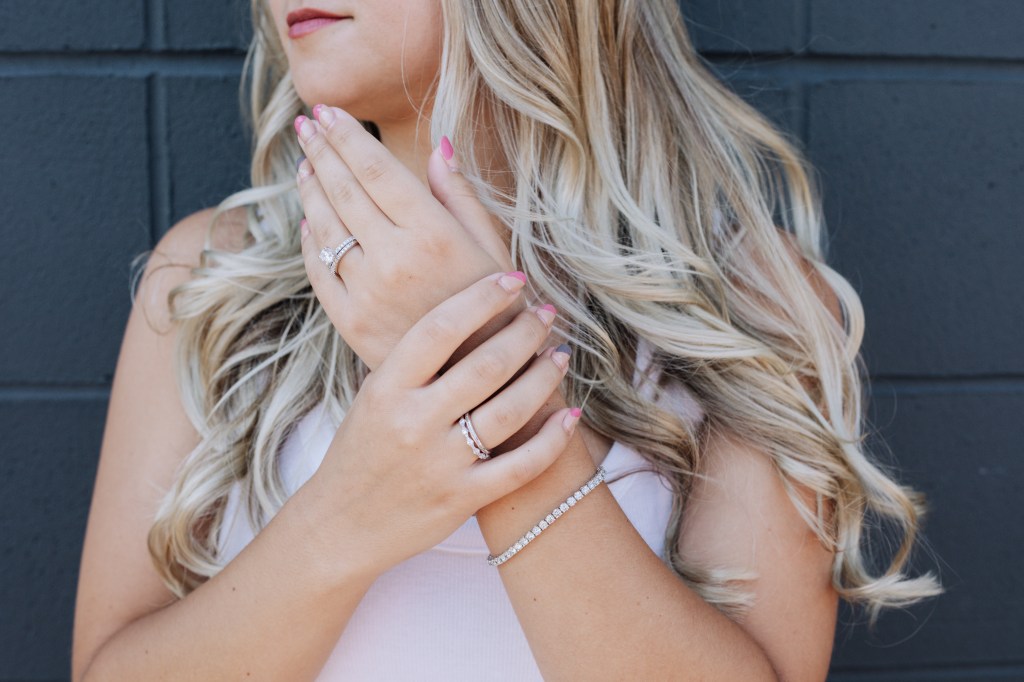The natural diamond industry is leveraging AI grading to compete
Consistent grading could be coming to natural diamonds, thanks to AI.
New York-based Rare and Forever first started training AI to grade diamonds in 2018, to make the classification of its diamonds more uniform and accurate. Now, it’s offering the service to natural diamond retailers, as competition with online and lab-grown diamond retailers heats up.
Across the diamond industry, grading is largely done manually, with graders grading diamonds by checking their color, clarity, cut and carat weight, among other factors, through a microscope. The Gemological Institute of America (GIA) is commonly used by retailers to assess and certify the quality of diamonds.
Since the emergence of lab diamonds in the 1980s, natural diamond brands have been striving to differentiate their products as premium. Natural diamonds typically sell for 60-80% more than lab-grown diamonds, according to diamond retailer Queensmith; their quality and provenance play into their value.
But a lack of accurate and consistent diamond grading has hurt the industry. According to a report by research company Research and Market, the global lab-grown diamond market was valued at $22.45 billion in 2022. The market value is forecasted to grow to $37.32 billion by 2028. Research company market.us has reported that the overall global diamond market will be worth around $140.1 billion by 2032, growing from $98.3 billion in 2023.
“With human grading, there are errors,” said Sam Indelicato, jewelry director of the 2-year-old diamond brand Rare & Forever. “It’s not always consistent; there is opinion and bias.”
As a previous wholesaler of diamonds, Indelicato said that graders have been known to upgrade the grade of a diamond to sell it at a higher price point. In the grading process, lab diamonds have been incorrectly classified as natural diamonds as recently as 2021. And the GIA has also been accused of taking bribes to improve diamond ratings. The Federal Trade Commission has set multiple diamond grading regulations centered on providing accurate information that does not mislead the customer.
Classifications of natural diamonds can be obscure and complicated for the customer, and — despite the grading system remaining unchanged — the same diamond can be given different grades in different assessments.
With AI, Rare and Forever is promising a solution for the grading process. To train the AI, it’s using large language models to compare thousands of diamonds and classify them according to the four Cs, as well as the other categories including milkiness. As the AI is dependent on the data sets it is trained on, its likelihood of bias is less than grading by human analysis, said Indelicato.
“AI doesn’t have bad days. It doesn’t eat or need coffee breaks. It doesn’t get bad eyes or have biases. At the end of the day, it creates accuracy and consistency,” he said. Indelicato declined to disclose Rare and Forever’s investment in training AI for grading.
Rare and Forever is working with brick-and-mortar jewelry retailers like Biondi Jewelers in Colorado to AI-grade their diamonds. As diamonds are more accurately graded, they’ll be more accurately priced, Indelicato said, adding, “Our retailers now have something that differentiates them compared to diamond sellers online.”
Current consumer demand for such information is low, considering its unreliability. Davis Biondi, co-owner of Biondi Jewelers, said that customers usually come in with a laundry list of things they are looking for in their diamond purchase, but data about the diamond itself isn’t typically of interest to them. “It’s usually customers that are engineers or very math-minded individuals who care about [the grading] aspect,” he said.
Olivia Landau, founder and CEO of the diamond brand The Clear Cut, said the human element of diamond grading is still important. “Integrating AI into natural diamond grading has the potential to improve the accuracy and consistency,” said Landau. “[Plus] AI-enhanced grading systems allow for the grading of a large number of diamonds quickly and efficiently. At times the major labs can have significant wait times, so it would be particularly useful for those who need to process large volumes of diamonds on a regular basis.”
But, she added, “It is important to consider the potential impacts on the livelihoods of human diamond graders. And diamonds are incredibly complicated, and if someone without significant knowledge and experience with diamonds helped draft these data sets, the AI-assisted grading could be wildly inaccurate.”
On a similar note, AI authentication is currently being trialed in luxury goods categories like handbags, but the jury remains out on its accuracy.
Technology has become more integral to the high-end jewelry industry. De Beers successfully used blockchain to trace 100 of its diamonds in 2020, and it plans to integrate the technology into its full assortment. Rare and Forever has also used blockchain to trace its diamonds.
AI could also be useful in traceability efforts by brands. Currently, diamonds can be traced back to their point of origin through an analysis of their molecular structure, but the process is time-consuming. AI would expedite the comparison of similar molecular structures. This information is becoming increasingly important for sellers of natural diamonds, as customers are caring more about social and environmental sustainability and where the products they buy come from.





